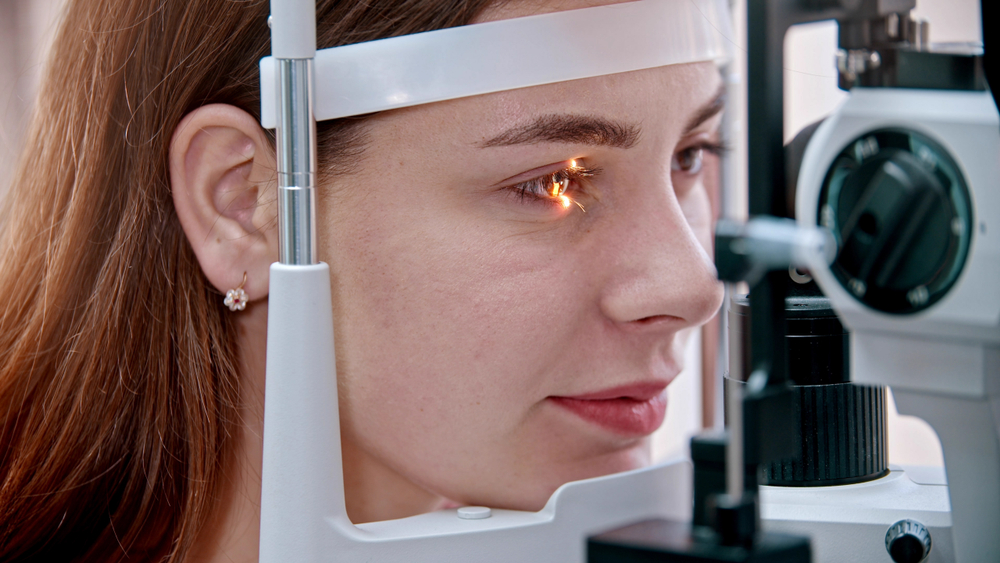
Chances are you have heard of glaucoma – one of the many different conditions that can adversely affect the health of our eyes and vision. Glaucoma is estimated to affect around 3 million adults in the United States and is one of the leading causes of blindness in the world.
Glaucoma occurs when there is an accumulation of pressure within the eye, which causes damage to the delicate blood vessels at the very back of the eye that service the macula – an area of light-sensitive cells that are responsible for transmitting messages between the eye and brain to tell us what we can see. Glaucoma is usually progressive, developing slowly over a number of months and years. Nevertheless, there are rare occasions where glaucoma can develop more quickly and thus also cause damage at a rapid rate.
Since any vision loss that occurs as a result of glaucoma is irreversible, prompt diagnosis and treatment are essential to preserving your vision.
Signs of glaucoma
In most cases, glaucoma is actually detected at routine comprehensive eye exams, which involve specific tests to check the pressure inside your eyes to establish your risk of developing glaucoma. However, knowing the signs and symptoms of glaucoma can still be instrumental in the early detection of the disease.
If your glaucoma is the most common, open-angle glaucoma that develops slowly, it is likely that the symptoms that you experience will include:
Loss of peripheral vision (the edges of your vision)
Blurred vision
Rainbow-colored circles or halos forming around lights
These symptoms will continue to get worse as your glaucoma progresses.
If your glaucoma is the rare type, known as closed-angle or closed glaucoma, you will likely experience symptoms much more quickly and these could include:
Severe eye pain
Nausea/vomiting
Red eyes
Headache/migraine
Blurred vision
If you experience these symptoms, it is crucial that you schedule an appointment with your eye doctor as soon as possible so that you can undergo testing to reach a definitive diagnosis.
Diagnosing glaucoma
If your eye doctor suspects that you may be affected by glaucoma, you will be put through a series of different tests in order for them to confirm the diagnosis. These include, but aren’t limited to:
Ophthalmoscopy: before this test, your eye doctor will use eye drops to dilate your pupils. This will enable your eye doctor to use special equipment to look through your eyes to assess the shape and color of the optic nerve for any abnormalities.
Tonometry: it will be necessary for your eye doctor to measure the amount of pressure within your eyes. This is done using a tonometry test, and you will be given a little anesthetic beforehand to ensure that you aren’t in any discomfort. Once anesthetized, your eye doctor will use the tonometer to lightly touch the surface of the eye, which ever so slightly indents the cornea. It is the resistance to the indentation that is measured to determine how much pressure is in your eyes.
Perimetry: perimetry is an assessment of your field of vision. It is important because peripheral vision, which refers to the very edges of your vision, it typically one of the first things to be affected by glaucoma.
Pachymetry: a test that is used to measure the thickness of your cornea – the clear, domed window that covers the front part of your eye. This is necessary because sometimes an abnormally thick cornea can cause the pressure in the eye to build.
Treatment for glaucoma
It is important for patients with glaucoma to start treatment as soon as possible so that they do not lose any of their vision unnecessarily. Exactly what treatment you are prescribed will depend on your individual circumstances, including the extent of your condition. You may also need to wear glasses or contact lenses in addition to undergoing glaucoma treatment, as these will help to maintain the clarity of your vision.
In the early stages of glaucoma, you may be given eye drops to manage your condition. There are numerous different types, all with the capability of reducing the amount of pressure within your eyes. You may need to try several in order to find the variety that works best for you. Your eye doctor will give you specific instructions about how often they should be taken, and these should be followed exactly.
If your eye drops aren’t reducing the pressure in your eyes enough, it may be necessary to move onto oral medications. Again, these must be taken exactly as directed. Oral medication is also usually the first treatment option for patients who are found to have sudden, acute-angle glaucoma.
One of the last options for patients with glaucoma is to try laser treatment, although, if your glaucoma is severe, you could potentially skip over the other treatments and go straight to laser surgery. This uses the laser to open the tiny drainage channels in the eye to release the trapped fluid and allow it to flow out of the eye more effectively in the future. If unsuccessful, you may need to have a more invasive surgery called a trabeculectomy in which the blockages within the eye’s drainage system are manually removed.
If you are concerned about glaucoma, don’t delay in scheduling an appointment with our professional eye care team today.







